Travelers 2011 Annual Report Download - page 48
Download and view the complete annual report
Please find page 48 of the 2011 Travelers annual report below. You can navigate through the pages in the report by either clicking on the pages listed below, or by using the keyword search tool below to find specific information within the annual report.-
 1
1 -
 2
2 -
 3
3 -
 4
4 -
 5
5 -
 6
6 -
 7
7 -
 8
8 -
 9
9 -
 10
10 -
 11
11 -
 12
12 -
 13
13 -
 14
14 -
 15
15 -
 16
16 -
 17
17 -
 18
18 -
 19
19 -
 20
20 -
 21
21 -
 22
22 -
 23
23 -
 24
24 -
 25
25 -
 26
26 -
 27
27 -
 28
28 -
 29
29 -
 30
30 -
 31
31 -
 32
32 -
 33
33 -
 34
34 -
 35
35 -
 36
36 -
 37
37 -
 38
38 -
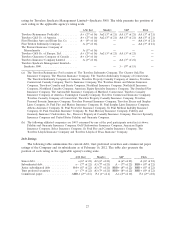 39
39 -
 40
40 -
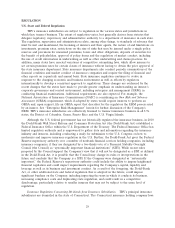 41
41 -
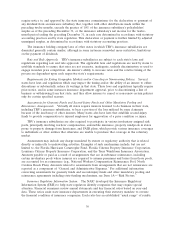 42
42 -
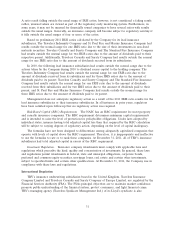 43
43 -
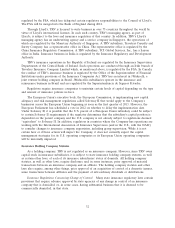 44
44 -
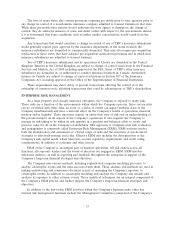 45
45 -
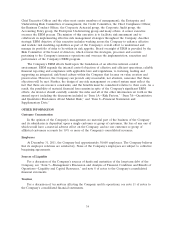 46
46 -
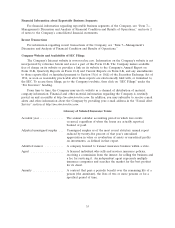 47
47 -
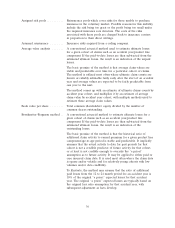 48
48 -
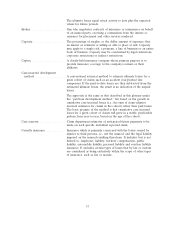 49
49 -
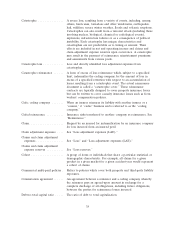 50
50 -
 51
51 -
 52
52 -
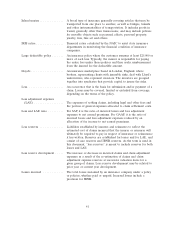 53
53 -
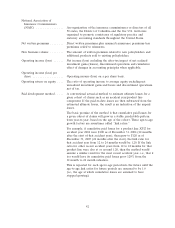 54
54 -
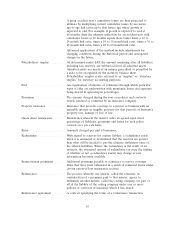 55
55 -
 56
56 -
 57
57 -
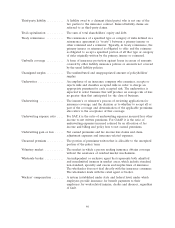 58
58 -
 59
59 -
 60
60 -
 61
61 -
 62
62 -
 63
63 -
 64
64 -
 65
65 -
 66
66 -
 67
67 -
 68
68 -
 69
69 -
 70
70 -
 71
71 -
 72
72 -
 73
73 -
 74
74 -
 75
75 -
 76
76 -
 77
77 -
 78
78 -
 79
79 -
 80
80 -
 81
81 -
 82
82 -
 83
83 -
 84
84 -
 85
85 -
 86
86 -
 87
87 -
 88
88 -
 89
89 -
 90
90 -
 91
91 -
 92
92 -
 93
93 -
 94
94 -
 95
95 -
 96
96 -
 97
97 -
 98
98 -
 99
99 -
 100
100 -
 101
101 -
 102
102 -
 103
103 -
 104
104 -
 105
105 -
 106
106 -
 107
107 -
 108
108 -
 109
109 -
 110
110 -
 111
111 -
 112
112 -
 113
113 -
 114
114 -
 115
115 -
 116
116 -
 117
117 -
 118
118 -
 119
119 -
 120
120 -
 121
121 -
 122
122 -
 123
123 -
 124
124 -
 125
125 -
 126
126 -
 127
127 -
 128
128 -
 129
129 -
 130
130 -
 131
131 -
 132
132 -
 133
133 -
 134
134 -
 135
135 -
 136
136 -
 137
137 -
 138
138 -
 139
139 -
 140
140 -
 141
141 -
 142
142 -
 143
143 -
 144
144 -
 145
145 -
 146
146 -
 147
147 -
 148
148 -
 149
149 -
 150
150 -
 151
151 -
 152
152 -
 153
153 -
 154
154 -
 155
155 -
 156
156 -
 157
157 -
 158
158 -
 159
159 -
 160
160 -
 161
161 -
 162
162 -
 163
163 -
 164
164 -
 165
165 -
 166
166 -
 167
167 -
 168
168 -
 169
169 -
 170
170 -
 171
171 -
 172
172 -
 173
173 -
 174
174 -
 175
175 -
 176
176 -
 177
177 -
 178
178 -
 179
179 -
 180
180 -
 181
181 -
 182
182 -
 183
183 -
 184
184 -
 185
185 -
 186
186 -
 187
187 -
 188
188 -
 189
189 -
 190
190 -
 191
191 -
 192
192 -
 193
193 -
 194
194 -
 195
195 -
 196
196 -
 197
197 -
 198
198 -
 199
199 -
 200
200 -
 201
201 -
 202
202 -
 203
203 -
 204
204 -
 205
205 -
 206
206 -
 207
207 -
 208
208 -
 209
209 -
 210
210 -
 211
211 -
 212
212 -
 213
213 -
 214
214 -
 215
215 -
 216
216 -
 217
217 -
 218
218 -
 219
219 -
 220
220 -
 221
221 -
 222
222 -
 223
223 -
 224
224 -
 225
225 -
 226
226 -
 227
227 -
 228
228 -
 229
229 -
 230
230 -
 231
231 -
 232
232 -
 233
233 -
 234
234 -
 235
235 -
 236
236 -
 237
237 -
 238
238 -
 239
239 -
 240
240 -
 241
241 -
 242
242 -
 243
243 -
 244
244 -
 245
245 -
 246
246 -
 247
247 -
 248
248 -
 249
249 -
 250
250 -
 251
251 -
 252
252 -
 253
253 -
 254
254 -
 255
255 -
 256
256 -
 257
257 -
 258
258 -
 259
259 -
 260
260 -
 261
261 -
 262
262 -
 263
263 -
 264
264 -
 265
265 -
 266
266 -
 267
267 -
 268
268 -
 269
269 -
 270
270 -
 271
271 -
 272
272 -
 273
273 -
 274
274 -
 275
275 -
 276
276 -
 277
277 -
 278
278 -
 279
279 -
 280
280 -
 281
281 -
 282
282 -
 283
283 -
 284
284 -
 285
285 -
 286
286 -
 287
287 -
 288
288 -
 289
289 -
 290
290 -
 291
291 -
 292
292 -
 293
293
 |
 |
Assigned risk pools .......... Reinsurance pools which cover risks for those unable to purchase
insurance in the voluntary market. Possible reasons for this inability
include the risk being too great or the profit being too small under
the required insurance rate structure. The costs of the risks
associated with these pools are charged back to insurance carriers
in proportion to their direct writings.
Assumed reinsurance ........ Insurance risks acquired from a ceding company.
Average value analysis ....... A conventional actuarial method used to estimate ultimate losses
for a given cohort of claims such as an accident year/product line
component. If the paid-to-date losses are then subtracted from the
estimated ultimate losses, the result is an indication of the unpaid
losses.
The basic premise of the method is that average claim values are
stable and predictable over time for a particular cohort of claims.
The method is utilized most often where ultimate claim counts are
known or reliably estimable fairly early after the start of an accident
year and average values are expected to be fairly predictable from
one year to the next.
The method comes up with an estimate of ultimate claims counts by
accident year cohort, and multiplies it by an estimate of average
claim value by accident year cohort, with multiple methods used to
estimate these average claim values.
Book value per share ........ Total common shareholders’ equity divided by the number of
common shares outstanding.
Bornhuetter-Ferguson method . . A conventional actuarial method to estimate ultimate losses for a
given cohort of claims such as an accident year/product line
component. If the paid-to-date losses are then subtracted from the
estimated ultimate losses, the result is an indication of the
outstanding losses.
The basic premise of the method is that the historical ratio of
additional claim activity to earned premium for a given product line
component/age-to-age period is stable and predictable. It implicitly
assumes that the actual activity to date for past periods for that
cohort is not a credible predictor of future activity for that cohort,
or at least is not credible enough to override the ‘‘a priori’’
assumption as to future activity. It may be applied to either paid or
case incurred claim data. It is used most often where the claim data
is sparse and/or volatile and for relatively young cohorts with low
volumes and/or data credibility.
To illustrate, the method may assume that the ratio of additional
paid losses from the 12 to 24 month period for an accident year is
10% of the original ‘‘a priori’’ expected losses for that accident
year. The original ‘‘a priori’’ expected losses are typically based on
the original loss ratio assumption for that accident year, with
subsequent adjustment as facts develop.
36
